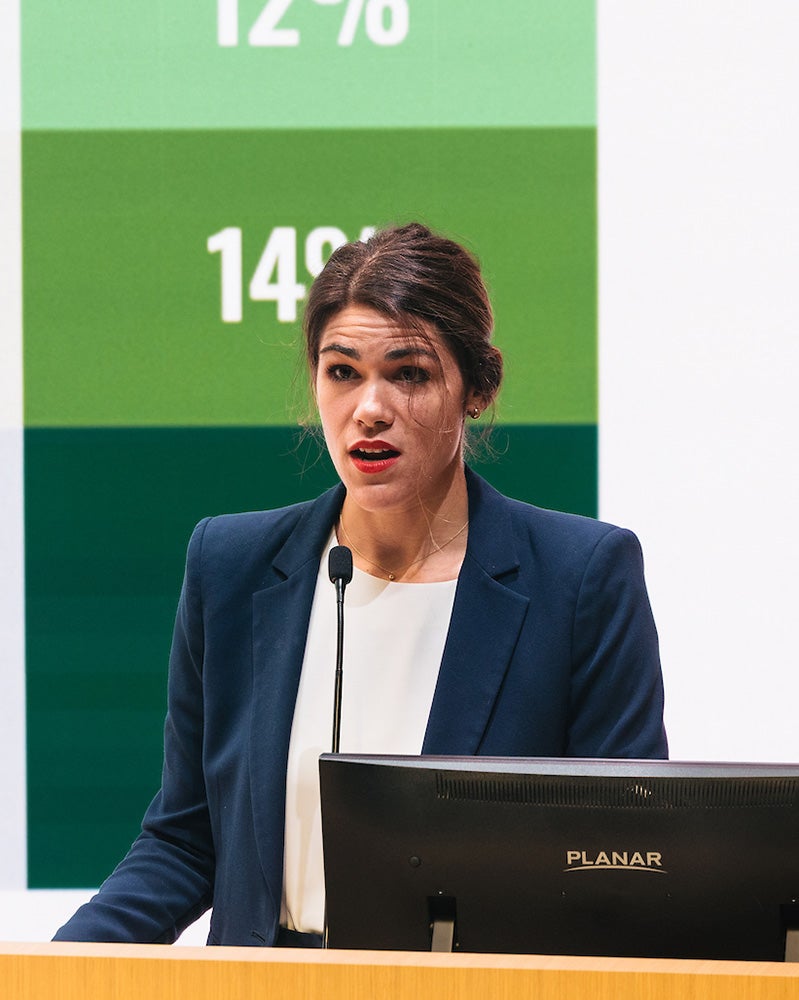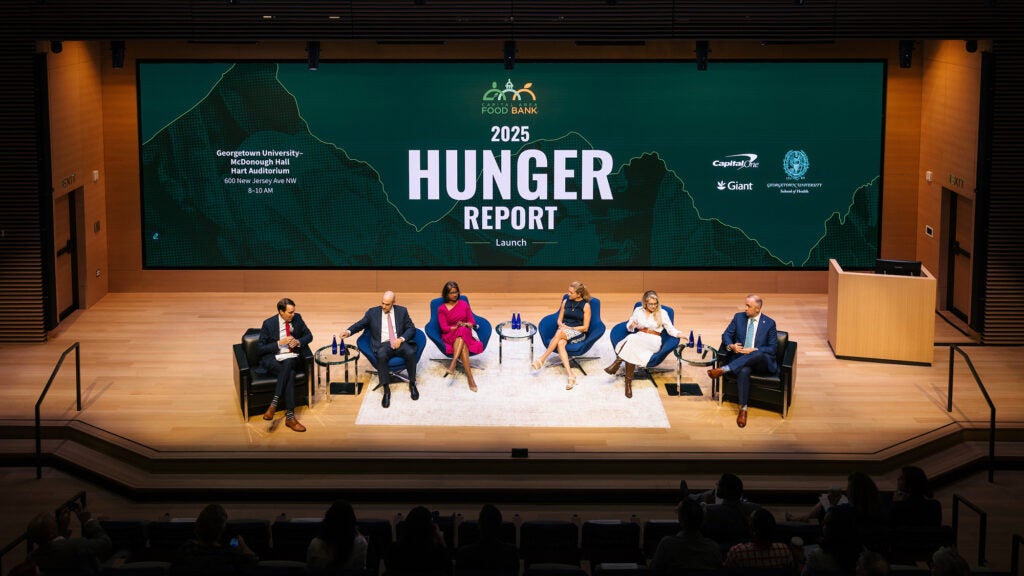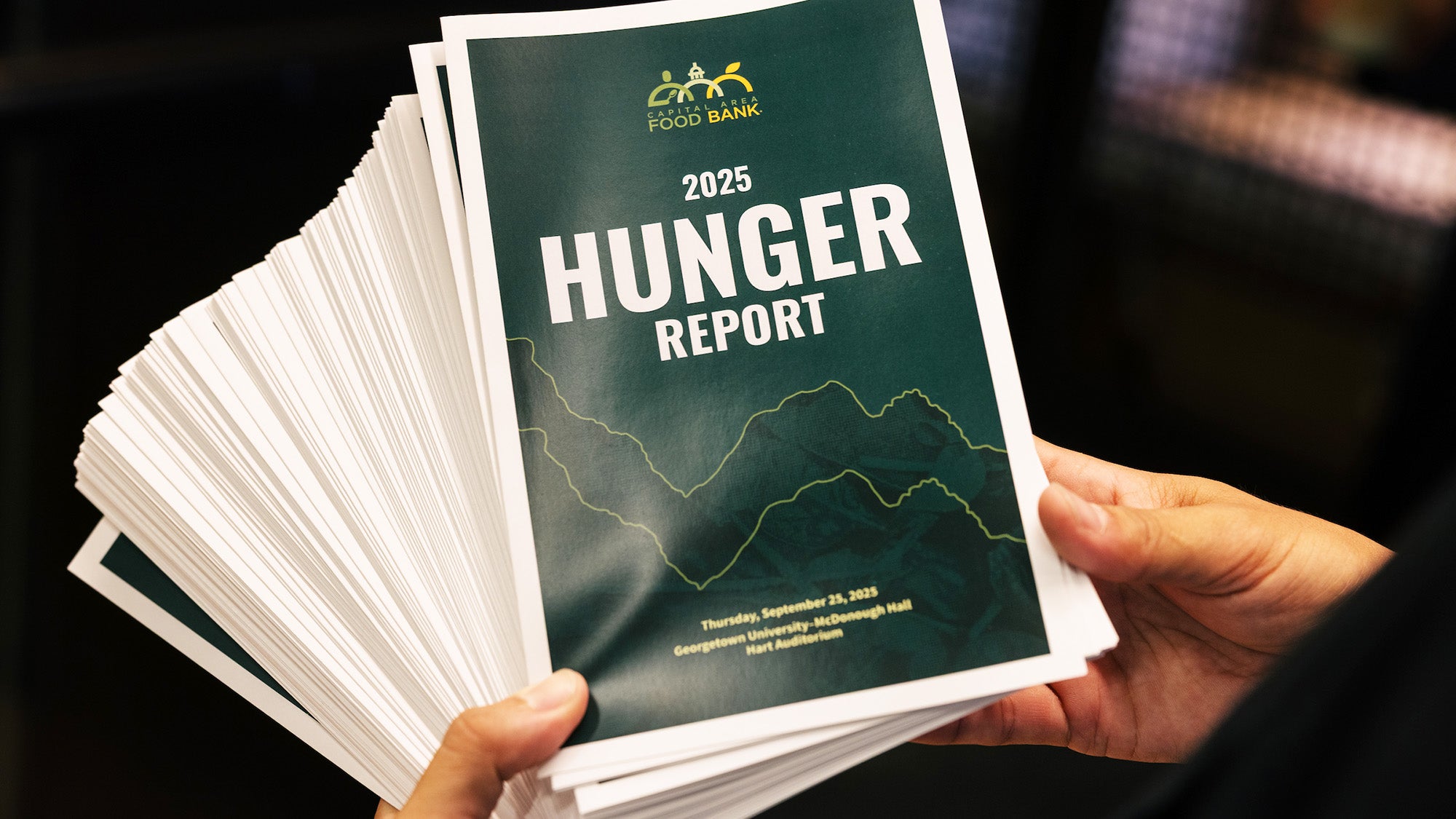New Report from Capital Area Food Bank Identifies Troubling Trends in Food Insecurity
(October 2, 2025) — A new report on hunger from the Capital Area Food Bank found that the percentage of people experiencing very low food security in the Washington, D.C., area has increased to 22%, meaning that about 820,000 adults locally are skipping meals or eating smaller portions.

Christopher King, PhD, FACHE
The 2025 Hunger Report was released on September 25 at a School of Health event in McDonough Hall on Georgetown University’s Capitol Campus.
“With a mission to advance the health and well-being of people locally, nationally and globally, the School of Health is proud to cosponsor the 2025 release of the hunger report,” said Christopher King, PhD, FACHE, dean of Georgetown’s School of Health.
In addition to a discussion of the report’s findings, the event included brief videos with Capital Area Food Bank clients, who shared their struggles to feed themselves and their families.

Sabrina Tadele
“We engage our food-insecure neighbors directly in the production of this report from research design to narrative framing to personal storytelling, as you’ve just seen in a couple of videos,” said Sabrina Tadele, senior director of strategic initiatives at the Capital Area Food Bank and co-author of the hunger report. “And it is a great privilege to be able to elevate their voices through this project.”
Since 2020, the Capital Area Food Bank has produced the hunger report to offer insights into food insecurity in the Washington, D.C., Maryland and Virginia (DMV) area. In partnership with NORC at the University of Chicago, the food bank surveys thousands of randomly selected households for the report, which was produced with support from Giant and Capital One.
Similar to findings in previous years, about 36% of local households reported experiencing food insecurity, though the specific incidence of food insecurity varies throughout the region. “When we dial in to individual counties and cities in the DMV, we see a broader range, spanning from one in five households in Arlington all the way to one in two households in Prince George’s County,” Tadele said.

The report was released at a School of Health event in McDonough Hall on Georgetown University’s Capitol Campus.
Very low food insecurity is “now in a consistent growth pattern,” Tadele said, increasing to affect an additional 75,000 people in the region over the last year. “Folks are expressing that they are skipping meals or not eating for entire days, potentially even cutting children’s food intake because they can’t afford to do otherwise,” she said.
“The Capital Area Food Bank’s hunger report is our regional story, my friends, reminding us that despite the wealth that exists in the region, children continue to go to bed hungry,” King said. “On behalf of the Georgetown community, thank you, Capital Area Food Bank, for the critical role you play in amplifying this story and doing work each and every day to counter the narrative.”
Kat Zambon
GUMC Communications

